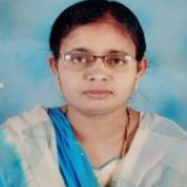
Sandhya Gudise
Work place: Department of ECE, VNITSW, Guntur, Andhra Pradesh, India
E-mail: sandhyag406@gmail.com
Website: https://orcid.org/0000-0003-1869-5499
Research Interests:
Biography
Sandhya Gudise received her PhD from Jawaharlal Nehru Technological University, Kakinada and working as an Associate professor in Electronics and Communication Department in VNITSW, Guntur. She received the master’s degree in instrumentation and control systems from JNTU College of Engineering, Kakinada. Her research interests focus on the medical image processing, with specific emphasis on the detection of normal and abnormal tissues in MR images of the brain. She published many research papers in various SCI, Scopus indexed journals and in national and international conferences.
Author Articles
Brain Tissue Segmentation from the MR Images Affected by Noise and Intensity Inhomogeneity Using a Novel Linguistic Fuzzifier-Based FCM Algorithm
DOI: https://doi.org/10.5815/ijigsp.2025.02.04, Pub. Date: 8 Apr. 2025
Brain MRI is mainly affected by noise and intensity inhomogeneity (IIH) during its acquisition. Brain tissue segmentation plays an important role in biomedical research and clinical applications. Brain tissue segmentation is essential for physicians for the proper diagnosis and right treatment of brain-related disorders. Fuzzy C-means (FCM) clustering is one of the widely used algorithms for brain tissue segmentation. Traditional FCM has the limitations of misclassification of pixels that leads to inaccurate cluster centers. Due to this, it is unable to address the issues of noise and IIH. In FCM there exists uncertainty in controlling the fuzziness of the clusters as the fuzzifier is fixed. This paper proposed a novel linguistic fuzzifier-based FCM (LFFCM) to overcome the limitations of traditional FCM during brain tissue segmentation from the MR images. In this method, a linguistic fuzzifier is used instead of a fixed fuzzifier. The spatial information incorporated in the membership function can reduce the misclassification of pixels. The proposed LFFCM can handle IIH, due to having highly accurate cluster centers. The inclusion of the adaptive weights in the membership function results in accurate cluster centers. Various brain MR images are used to evaluate the proposed technique and the results are compared with some state-of-the-art techniques. The results reveal that the proposed method performed better than the other.
[...] Read more.Other Articles
Subscribe to receive issue release notifications and newsletters from MECS Press journals